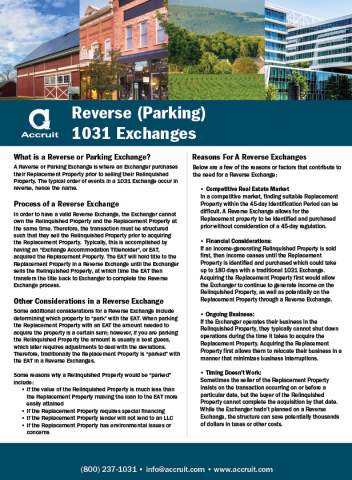Understanding the Reverse Exchange
Image

A Reverse, or Parking, Exchange is where an Exchanger purchases their Replacement Property prior to selling their Relinquished Property. The typical order of events in a 1031 Exchange occur in reverse, hence the name.
However, for a valid Reverse Exchange the Exchanger cannot own the Relinquished Property and the Replacement Property at the same time. Learn more about the process and procedures of a Reverse Exchange in this flyer.

